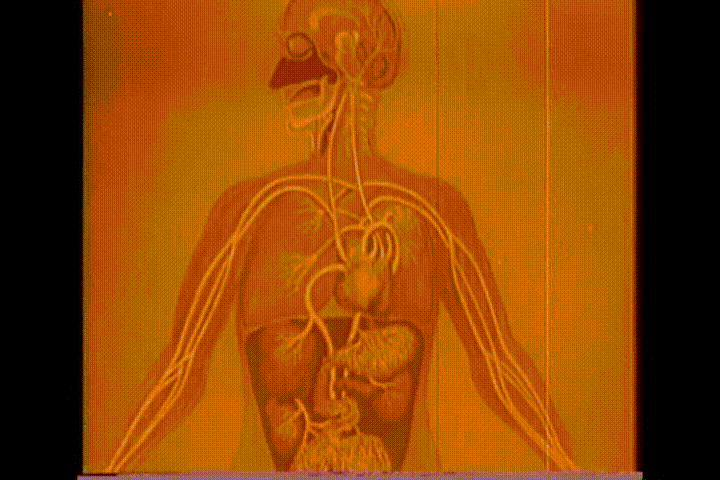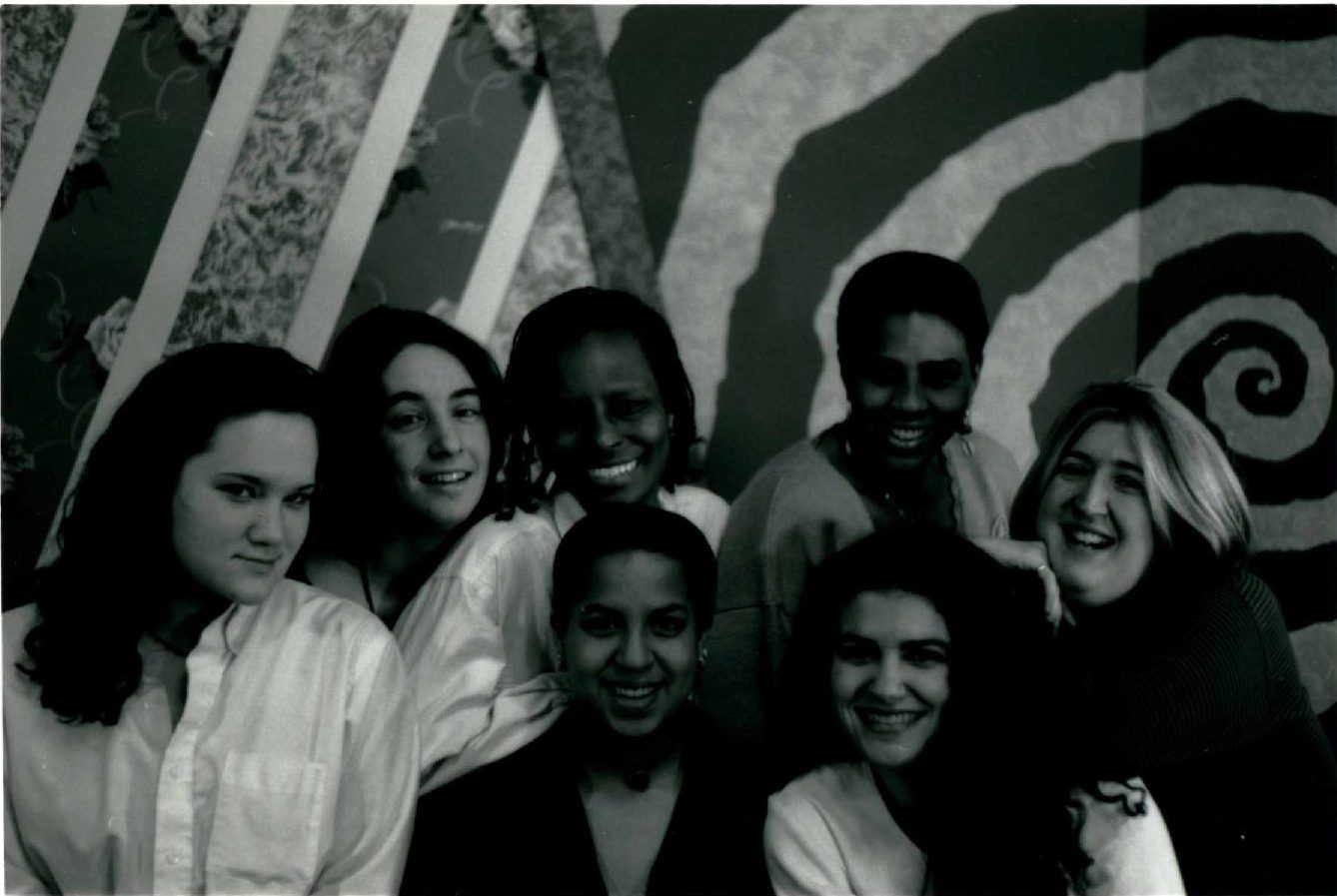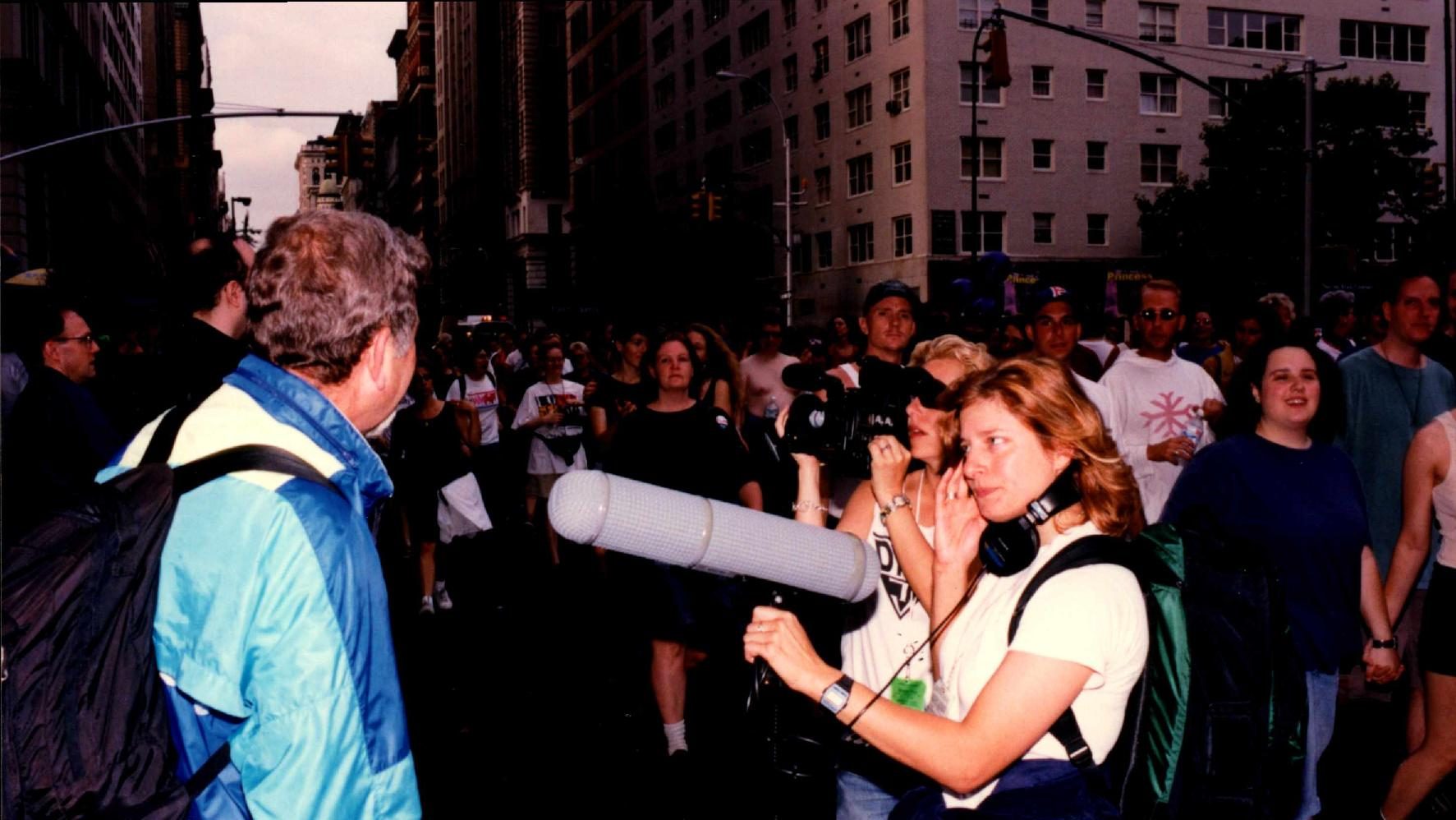
As part of the program’s mission to “incite, provoke, subvert, and organize,” Dyke TV made health education a major priority. Inspired by the women’s liberation and AIDS activist movements, Dyke TV sought to address the lack of research around women’s medical issues and higher rates of certain health problems among lesbians.
Dyke TV’s health segments paid particular attention to the ways lesbian-identified women are more likely to suffer from certain illnesses, from breast cancer to AIDS. According to AIDS activist Maxine Wolfe, women who identify as lesbian are more likely to have HIV/AIDS than women who have sex with women but do not identify as lesbian.1 Many health issues follow similar trends: women who have sex with women are less likely to suffer from health problems than bisexual-identified women, who are less likely to suffer from the same health problem than lesbian-identified women.
On average, lesbians and bisexual women are more likely to suffer from:
- heart disease
- breast cancer
- cervical cancer
- substance abuse
- endometriosis
- certain mental health issues (i.e. anxiety, depression, and PTSD)2
In the quiz below, test your knowledge of lesbian health issues:
Reasons for Health Inequality
It is not that being a lesbian or bisexual causes these health problems, but that queer women are subject to a number of societal factors that make them less likely to seek treatment for mental and physical health problems.
In truth, it is no wonder that these certain health issues disproportionately afflict lesbians — the medical system has never been designed to support them. It was not until 1973, after years of activism from the gay and lesbian communities, that the American Psychiatric Association stopped classifying homosexuality as a mental illness.3 Until at least the mid-20th century, women have also dealt with the threat of psychiatric institutionalization for “female hysteria.”4 And the gender research gap in medicine has meant that women’s health issues like menstrual disorders, menopause, and certain cancers are systematically misunderstood and devalued, even today.
Lesbians like the ones featured in this clip,5 who have never had their health problems taken seriously, are unlikely to seek support in the medical institution. Fears of discrimination or anxiety about reliving sexual trauma deter many lesbians from going to a gynecologist or physician. Lesbians are also less likely to have health insurance than straight women,6 a problem worsened by the United States’ refusal to legally recognize same-sex partners until recently.
These barriers to access also fall down largely along racial lines. In one 1997 study, 85 percent of Black lesbians reported experiencing racial discrimination from their healthcare provider in addition to discrimination based on sexuality.7 This, coupled with the fact that many of the health problems that ail the lesbian community disproportionately affect lesbians of color, points to the multiple ways the health establishment continues to fail to provide for our nation’s diverse communities.
Dyke TV’s Health Activism
Dyke TV’s program sought to address these inequalities in two major ways. Firstly, through segments that educated viewers on health issues affecting lesbians. And secondly, through providing viewers with alternatives to the discriminatory healthcare system that has historically hurt many lesbians. Dyke TV’s Lesbian Health segment taught viewers how to perform their own pelvic exams and monthly breast exams at home, profiled health activists from the Community Health Project (now Callen-Lorde), and spoke to lesbians living with HIV about their experiences. They provided lesbians with actual numbers to call and free lesbian-affirming clinics to visit.

Dyke TV’s Lesbian Health segment serves as a striking example of the ways the lesbian community built cultures of mutual care around health, media production, and political activism as they came out of the AIDS crisis. Even more than providing tools for lesbians to find health services, Dyke TV offered support for lesbians to connect with one another around health issues, to advocate for change, and to tell their own stories in a wide-reaching media format.
Check out the other pages in this section for more information about Dyke TV’s Lesbian Health work. As you read, ask yourself: What kinds of experiences made medical care so inaccessible for lesbians? How might the AIDS crisis have influenced Dyke TV’s programming around health? And, crucially, how have these conditions changed today?
Footnotes:
- Dyke TV, Episode 77, 1994, Dyke TV Records, Sophia Smith Collection, Northampton, Massachusetts. ↩
- “Lesbian Health Status and Health Risks,” ed. A. L. Solarz, Lesbian Health: Current Assessment and Directions for the Future, (Washington, DC: National Academies Press, 1999), available at: https://www.ncbi.nlm.nih.gov/books/NBK45095/. ↩
- Jack Drescher, “Out of DSM: Depathologizing Homosexuality,” Behav Sci (Basel), 5 (2015): pp. 565-575, doi:10.3390/bs5040565. ↩
- Rainey Horwitz, “Medical Vibrators for Treatment of Female Hysteria,” The Embryo Project Encyclopedia, Feb. 29, 2020, https://embryo.asu.edu/pages/medical-vibrators-treatment-female-hysteria. ↩
- Dyke TV, Episode 94. 1995. Dyke TV Records. Sophia Smith Collection, Northampton, Massachusetts. ↩
- Solarz, “Lesbian Health Status.” ↩
- Ibid ↩
